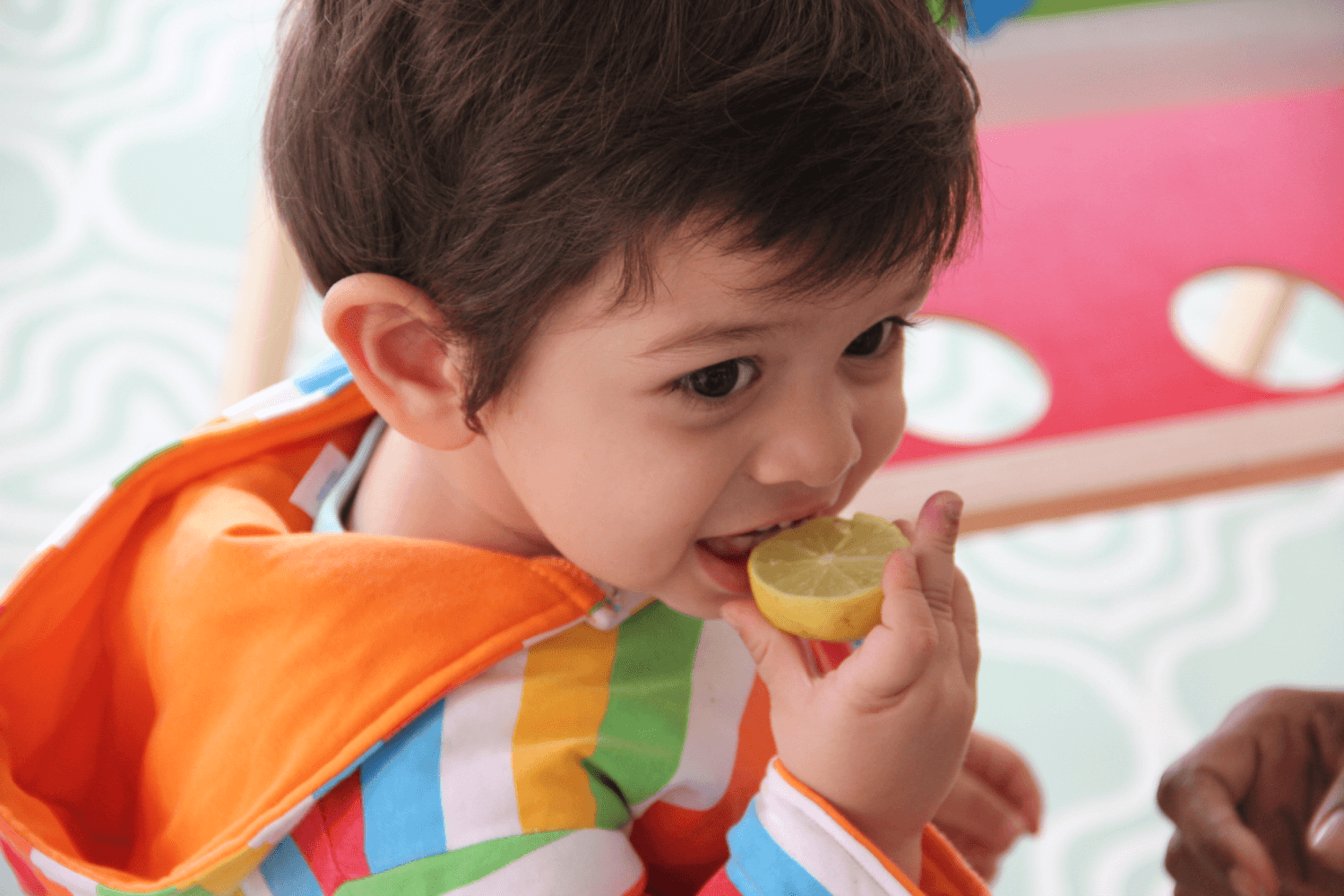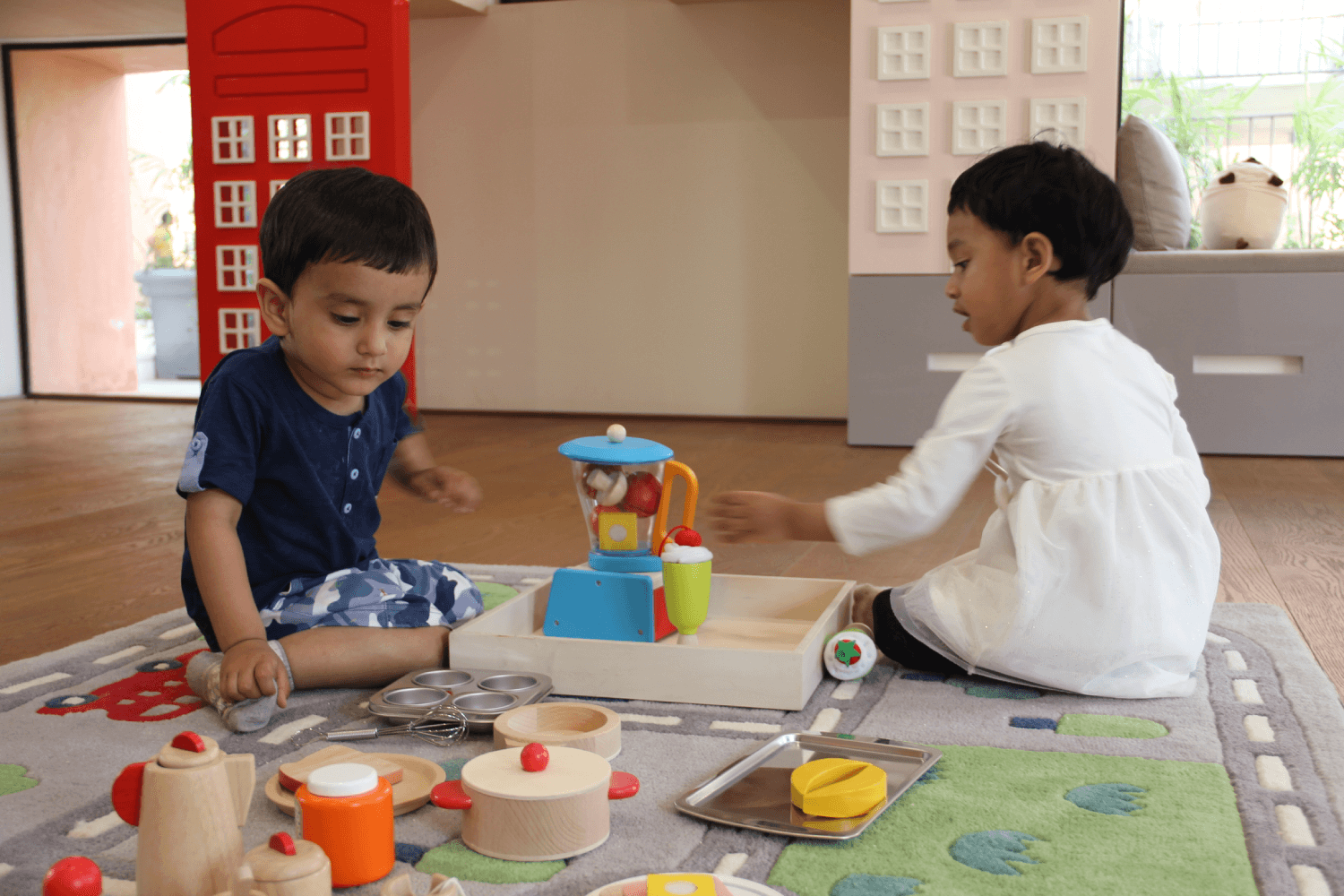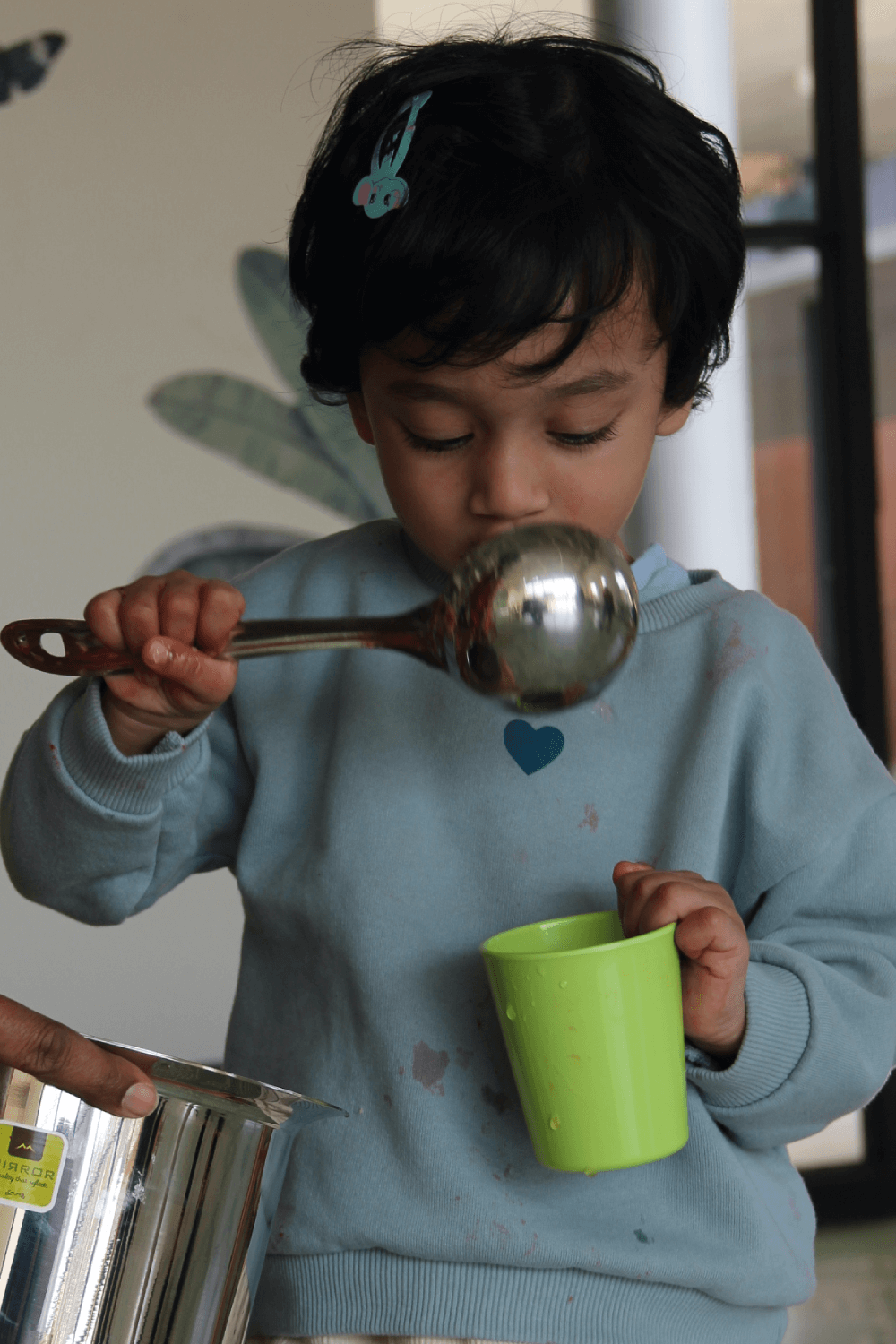22 May Tips To Eat Right, Bite-By-Bite!
#1 Healthy Snacking
Your child’s daily routine must include 2-3 healthy snack choices that are nutritious for children. Begin limiting snacks in quantity and frequency, it ensures that the child feels hungry for the meals and increases his/her appetite for them. It’s totally normal, expected even, for kids to be a litle hungry or thirsty in regular intervals, parents must make sure to help them regulate their proportions.
Example: For instance, give them different healthy snack options in intervals, such as their favorite fruit at times, a nice animal fruit bowl or veggie salad, fruit-flavored milk smoothie, nuts, etc. Packing litle surprises for them from time to time (some dark chocolate chips at the botom of the smoothie glass) makes them enjoy their meal.
#2 Designated Eating Spaces
Promote the habit of allowing food consumption in specified spaces. Say, you name the kitchen, dining room, or the outdoor table in the garden. Specifying the purpose of the space and complying with it ensures boundary establishment with children. When we talk about healthy eating habits, they include dining etiquete and learning to sit at one place during their snack or mealtimes. It also keeps spaces clean and restricts the spread of food crumbs in specific places as well and not where they shouldn’t be (like your bed). These habits limit the temptation to extend snacking and meal times and distract children from using eating as a distraction in life.
Example: Decide a theme every one or two weeks and allow children to choose a label for each area. The nutritious food revolves around those themes. Since the children help in deciding the theme, they feel connected to the choices they make and feel happier to eat. Take the theme ‘colors’ for instance, children could choose to assign red to the dining room, yellow to the kitchen, and green to the living room. Make it exciting for them to go there and want to eat, by rewarding them with something related to the ‘food theme’ of the week if they sit and eat well!
#3 Provide A Variety Of Options
In today’s fast-paced world, it is sometimes possible that your litle one might not like to eat a specific food item, present them with at least 10 different items during different meals. It is normal for children to express dislike for various foods at some point. Tell them the rule that they have to at least taste the food or have 2 bites if not more. Pressurizing kids to eat food they don’t they might begin to associate it with negativity. You can also try taking the food they dislike away at times and reintroduce it again at a later time with a food they like. With time they will grow into liking specific foods and develop the taste buds for them.
The advice of introducing babies to a diverse diet is to limit the likelihood of developing allergies as one of the benefits. It helps develop a diverse palate early on and the ability to eat a variety of foods makes it easier for kids to get the different vitamins and minerals that their growing bodies need. Keep offering healthy options regularly. Below are some healthy food swaps you can make –
Swap This – With This
Juices – Fresh Fruits
Ice Cream Popsicle – Frozen Grapes Popsicle
Buter – Avocado Mash
Buter Toast – Avocado Toast
Frankie – Letuce or Paneer Wrap
Granola – Oats
Milkshakes – Kale Smoothie
Dessert – Dark Chocolate
Potato Chips – Popcorn
#4 A Reliable Backup
To proactively avoid a potential struggle, be ready with a part of the home-cooked snack or meal that is ‘reliable’ in the sense that kids will certainly eat it. It could be something basic like curd & rice, veggie pasta, or bread. If you are introducing a new grain, try to make sure that the vegetable portion is reliable. This way, even if children aren’t fully satisfied, they won’t starve either.
Patience is key. Always prepare combination meals initially to identify their likes and dislikes. It should be a smart fix of some fun food items that the child will definitely like mixed with some veggies or fruits. Example: A good meal combo would be a veggiepacked risoto.
#5 Add Fun Twists To Food
Prepare the foods in different ways in taste combinations or visual shapes. Example: if your child does not like raw sprouts, cook them or make a combination of sprouts and another food item they like (pomegranates and a squeeze of lemon).
Some regular food items that can be made into something exciting for your children are mentioned below. These can be customized as per your child’s likings and made differently each time –
- Vegetables packed in a quesadilla or a taco
- Potato roasties
- Veggies on toast or bruscheta
- Vegetable pockets or bites
- Wraps or Frankies with healthy stuffings
- Veggies baked with cheese
- Vegetable noodles
- Hummus & Veggies
#6 Recognize Hunger Signals & Teach Portion Control
It is important to encourage balanced food eating habits in your child. A healthy mix of everything is what they need to eat to grow into healthy individuals. Make a customized family chart with your kids where you all put in healthy foods you consume daily and how they help in your physical and mental growth. Discuss this with your children and make them understand its importance too. Pressuring them to finish everything on the plate confuses their hunger and satiation signals.
Another way to approach is by using different containers to serve the food. You can use a plate with different compartment sizes that have recommended portions marked. These plates come in fun designs with many themes, you can also make your own. Initially put in a small portion of the item they dislike, as they gradually develop the taste for it, shif the same item to the bigger compartment in the plate, at the same time drawing connections and explaining to them how they are growing as well when they eat more of healthy food.
#7 Educate Children About The Food
With the many choices of foods, teaching kids how to navigate the food world is very important. Children need to know what they put in their bodies and its impact on their health. Talk to them about what your family is eating, its benefits, and its disadvantages. Try to explain to them which foods should be eaten. Sort food items into baskets of healthy and unhealthy food items as a categorization game with children.
#8 Food Is Art
With young children, be as innovative as possible. Make food items bite-sized, colorful, atractive, and enticing for your child to eat. Example: A rainbow fruit plate.
When healthy food is exciting, junk food loses its charm of being a novelty. When kids grow older and atend social situations. They end up focusing on choosing unhealthy choices or be influenced by peer pressure, remember they are just kids. They will make the wrong choices, mistakes and learn from them, so let them explore and grow, be patient. Keep giving them the right heath advice thought at home, consistency works the best. They will watch and learn eventually.
Another trick to deal with this is the way in which you present the food to the child. Make it looks visually appealing so that they get curious about its taste.
#9 Model Eating Behavior
Parents being role models to their children must follow the basic mantra is to “practice what you preach”! You must model the food behavior you believe to be healthy and you can surprisingly find yourself learning to be a beter eater with your child. Be the healthy eater you want your child to be. Indulge in tasty, innovative healthy treats with them and show them how much fun healthy snacks can be! Make it a weekend family bonding time to try new, fun, and healthy recipes every Sunday and understand the benefits of the same by making it and then discussing it with your child.
Let’s get cooking!
How about we try baked, cheesy mashed potato bites this Sunday…Yummy!
#10 Let Children Help
Let your toddler help you with the meal preparations or give them some food to sense and let them watch you cook the meal. Use lots of colorful veggies in a toddler’s meal, such as red, green, and orange. These sensorial experiences instigate their curiosity too. Tasks like opening a pouch, puting something in a bowl, pouring liquids from one container to another, or tasting can be activities your children can do. The smell of the food cooking makes the children connect happy emotions with the experience.
“Health requires healthy food.”
– Roger Williams





No Comments